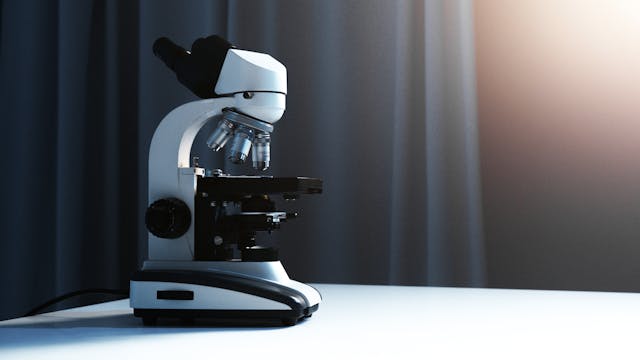Last Updated on March 17, 2024 by Nasir Hanif
Microscopes are often used in educational or scientific settings for the observation of living organisms and objects that would normally be invisible to the human eye.
Basic components
The frame of a microscope is made up of three parts.
The base is the big piece supporting the microscope. A microscope has to be kept steady to receive a clear image of the item being magnified, which is why the base is so important.
The base size is dependent on the weight of the microscope. When carrying a microscope, one hand should be placed underneath the base to support its weight.
The arm is the C-shaped section connecting the base to the controls and the tube. The angle of the arm can usually be adjusted for more comfortable use.
Students should learn about the arm first, as it can be safely picked up when transporting the microscope. Students should be taught to always take hold of the arm first if moving the microscope.
Tube
The tube is the big part connected to the arm. At the bottom of the tube is the turret with the magnifying lenses. Users should not look directly down the tube as the eyepiece is actually mounted on top of it.
The tube cannot be adjusted and students need to be taught to not grab a microscope with it.
Magnification
When magnifying an object eight different microscope parts are used.
1 The stage, a small surface under the turret where the object being magnified should be placed. The object normally placed on a microscope slide and metal clips secure the slide. In the centre of the stage is a hole known as the aperture, which light comes through to illuminate the object, which therefore needs to be aligned with the aperture.
2 The illuminator is positioned below the stage and illuminates the target object. An illuminator should be adjusted to reflect sunlight. Inside the illuminator is an 110V bulb.
3 The turret, a rotating circle fixed beneath the tube and has different objective lenses attached to it. The turret supports those lenses and allows the user to select the correct one.
4 The eyepiece, which is mounted on the tube and where users look into. It normally has a lens with a magnification power of between 10-15X/. The magnification can be calculated by multiplying that power by the power of the objective lens.
5 The controls, which are located on the side of the arm and allow the magnification to be adjusted by having the stage brought nearer or further away. A coarse control makes broad adjustments and a fine control makes more precise ones.
6 A rack stop, a small screw and safety feature placed next to the stage to stop the stage getting brought too near to the objective lens.
7 The objective lenses hang right over the stage from the turret and range in magnification power from 4-100X. They are the most important but also the most fragile parts of a microscope.
9 The condenser lens only features on certain microscopes and focuses the light on the target object.
It is vital to understand the important parts of a microscope and how they work to use it correctly and communicate easily with others.







